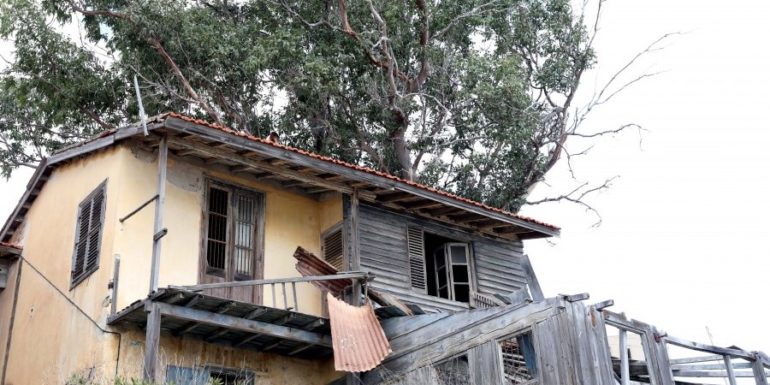The colors, the paintings on the wall in almost all the rooms, the dishes on the wall and the frescoes in the fireplace, are preserved despite the passage of almost five decades in the blue bungalow, the summer residence of Paul George, overlooking the beach of Varos with the eucalyptus in the backyard.
The renowned contemporary painter of Cyprus created in this house for many years until the Turkish invasion made Varosi inaccessible and many of his works were trapped in the enclosed area of Famagusta. Falirou Street, which was once full of life, is now silent. But not art. It stands out in every room of Paul George's house even today. KYPE entered the blue bungalow and recorded its current situation.
George Pol. Georgiou was born in 1901 in Famagusta and was a child of a wealthy and well-known family of Varos.
"The painter spent his summers in the Blue Bungalow, which was almost adjacent to the King George Hotel on the beach of Famagusta opposite the island of Kamila. The Blue Bungalow was decorated in a special way by the painter, a tribute to Cyprus that he loved so much: wonderful folk stucco suvants, built-in traditional dishes but also frescoes by George himself, saints and churches and a lonely Don Quixote upstairs " , describes the images in KYPE by Giannis Toumazis.
The Professor of History and Theory of Art, Varosiotis, also contributed to the exchange of works of art through the bi-communal Technical Committee for Culture, among which were works by Paul George that were returned to the Greek Cypriot side.
Among the works returned are 44 works by Georgios, said Mr. Toumazis. The 41 come from the mansion of the artist's family at 136 Ermou Street and the three belong to the Collection of the Municipal Gallery of the city. Several of the works are depicted in photographs of the interior of the house of Georgios Pol. Georgiou, released by the artist's niece husband John Outram in 1969, he added.
"Although self-taught, he managed to create a very exuberant painting idiom, which is distinguished for its technical mastery and its thematic variety, always influenced by Cyprus, the world and its history. His works could be classified into three main thematic units: a. Cyprus and its people (mainly the countryside they loved), b. works with religious themes and c. the works with themes from the history -older and newer- of the island ".
Georgiou was happy to present his work in many exhibitions both in Cyprus and abroad, he added, noting that his work "The Tradition of the Italian Fleet - September 13, 1943" belongs to the collection of the Imperial War Museum in London, while his work "The Pirates of the Aegean" was given to Winston Churchill and is located in Chartwell, Kent, where Churchill's home is located.
Giannis Toumazis stated that Paul Georgiou adored the old town of Famagusta and its monuments, as shown in his self-portrait of 1945.
After the death of George, he noted, the nieces of Rima Outram and Aristodemus Phoenix recorded about 297 works that were in the house-workshop of the artist. In fact, many of them still carry the white round numbering labels that his nieces had put on the works in 1973.
